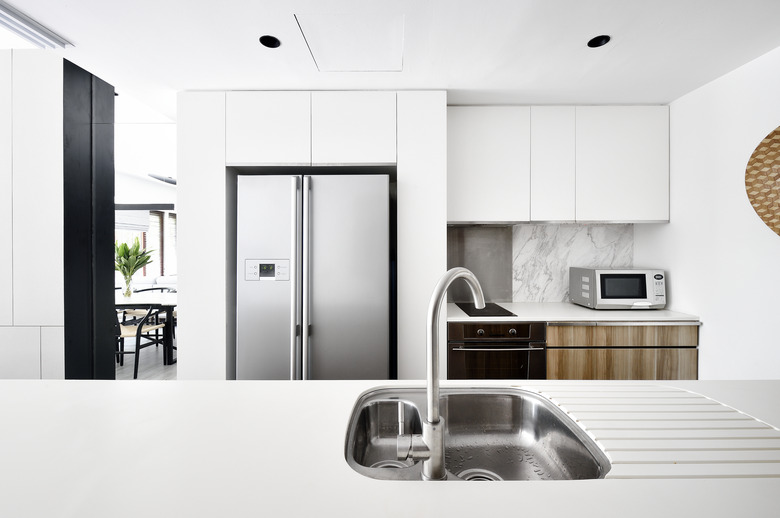Signs Of A Refrigerator Going Bad
If you're lucky, you'll see clear signs your refrigerator is dying instead of it simply shutting down one day. While any one sign may not mean the worst, act quickly if your refrigerator shows multiple signs of disrepair. Problems with newer models may be worth calling in a repairman, but for older models replacement is best. Newer refrigerators are more energy efficient, and it's easier to find parts for repair.
Constantly Running Motor
Constantly Running Motor
Refrigerators that may be close to dying often have motor problems. Sometimes the motor fails to run — a sure sign that the unit will go bad quickly or has already died. A motor that constantly runs is also a bad sign. You need to observe your appliance closely for this, as some newer, larger-capacity refrigerator models have motors that run almost all of the time.
If the fridge isn't new and the motor literally never stops, this points to a malfunction with the part. You risk the motor overheating and breaking completely. The motor also may be running because the refrigerator is not maintaining its cool temperature, which can mean the motor is fine but other parts of the refrigerator, such as the compressor, are not.
Spoiled Food and Warm Air
Spoiled Food and Warm Air
Refrigerators that fail to properly cool food could have several problems, and each of them could lead to the appliance's complete breakdown. The internal thermostat could be broken, the compressor fan could be malfunctioning or the coolant could be leaking. The motor running constantly could clue you into cooling problems, but an easier way to check is by monitoring your food.
If the food is spoiling more rapidly than normal or is room temperature or warmer than normal, your refrigerator's cooling system could be going bad. Check the temperature by placing an inexpensive thermometer inside the fridge and waiting 30 to 60 minutes. If the temperature is above 40 degrees Fahrenheit, try turning it to a colder setting. If the problem persists, you have a broken refrigerator.
Leaks and Condensation
Leaks and Condensation
While minimal condensation and moisture on your refrigerator may be normal, liquids should never pool in or around the appliance. These leaks are a signal that the refrigerator is going bad. It could be a problem with the seals, which may be broken or cracked or may have slipped loose. You can replace these relatively easily and cheaply, and they're not a death knell for the refrigerator. More serious problems attributed to leaking and pooled liquid include a failing heater, bad insulation or a broken tube channel.
Frayed or Worn Wires
Frayed or Worn Wires
Your refrigerator could be operating perfectly from a mechanical standpoint but still hold a clear sign that it's near death — bad wiring. Any sign of frayed, broken or worn wires should be taken as a sign your refrigerator could go from running to nonworking very quickly. Sometimes you can solve the issue by procuring a replacement cord, but in many cases, a bad wire means purchasing a new fridge.
Increased Energy Usage
Increased Energy Usage
The most subtle sign of a refrigerator going bad is your electricity bill. Bills that steadily increase could point to an ever-increasingly inefficient refrigerator. Refrigerators that must work harder to operate normally are compensating for a mechanical problem, which could be anything from a faulty motor to a bad internal thermostat. The trick is determining whether the refrigerator itself is causing higher energy bills.
Some power companies allow you to track specific appliances, or you can track it yourself. A watt-hour meter plugged into your fridge will tell you how much electricity the appliance is consuming. You can measure before you suspect problems to get a baseline, or compare the reading with the average energy consumption for your model, which is usually available in the owner's manual or on the manufacturer's website.
